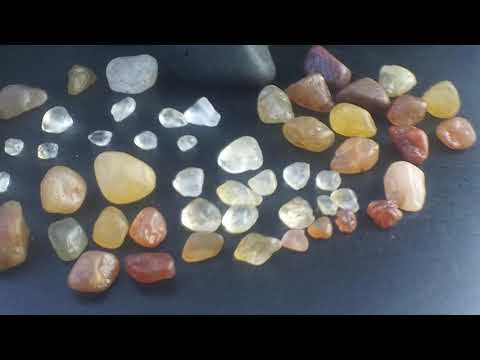Uncut diamonds are truly mesmerizing gems that possess a raw, untamed beauty. Their unpolished form exudes an aura of mystery and intrigue, captivating anyone who lays eyes upon them. These precious stones, untouched by human hands, sparkle with an enchanting brilliance that is both dazzling and unrefined. Uncut diamonds exhibit a natural, rugged charm that is unlike any other gemstone, with their unique shapes and textures telling the story of their formation deep within the Earth’s crust over millions of years. The rough surface of uncut diamonds adds to their allure, as it serves as a reminder of their unadulterated origin and the untapped potential they hold within.
When gazing upon uncut diamonds, one cannot help but imagine the possibilities that lie within these unblemished treasures. Their uncut state offers a glimpse into the raw perfection that awaits beneath the surface, waiting to be unveiled through the skilled hands of a master jeweler. The allure of uncut diamonds lies in their raw, unrefined nature, which sets them apart from their polished counterparts. These captivating gems possess an inherent charm that appeals to the adventurous and those who appreciate the beauty found in nature’s rawest form. So, explore the world of uncut diamonds and uncover the hidden beauty that lies within these unpolished marvels.

What Do Uncut Diamonds Look Like?
| Characteristic | Description |
|---|---|
| Shape | Uncut diamonds typically showcase a natural octahedral shape, resembling two pyramids joined at the base. However, they can also be found in other shapes such as dodecahedron, cube, or macle formation. |
| Color | Uncut diamonds come in a wide range of colors. The most common color is yellow, caused by the presence of nitrogen impurities. However, they can also occur in shades of brown, gray, and even green or blue, which are considered extremely rare and valuable. |
| Surface Texture | The surface of uncut diamonds appears rough and textured. They often exhibit natural etch marks, known as trigons, resembling grooves or triangular patterns. These surface features are remnants of the crystal’s growth process deep within the Earth over millions of years. |
| Transparency | Uncut diamonds are usually opaque or semi-transparent. Their level of transparency can vary depending on the impurities present and the quality of the crystal structure. Diamonds with higher clarity and fewer inclusions tend to be more transparent and desirable. |
| Lustre | Uncut diamonds possess a natural brilliance called adamantine lustre. This exceptional property allows them to reflect and refract light, resulting in a stunning sparkle. The lustre of an uncut diamond is often enhanced during the cutting and polishing process, revealing its true beauty. |
| Size | Uncut diamonds can vary significantly in size, ranging from tiny chips to large crystals weighing several carats. The size of a diamond directly influences its rarity and value, with larger stones being more sought after in the gem trade. |
Note: Uncut diamonds, also known as rough diamonds, undergo cutting and polishing to transform them into the sparkling gemstones we commonly associate with diamonds. The unique characteristics of uncut diamonds make them fascinating specimens for gem enthusiasts and collectors.
“From Rough to Radiant: Transforming Natural Diamonds!”
What Do Uncut Diamonds Look Like?
Diamonds are one of the most sought-after gemstones in the world, known for their incredible beauty and value. While most people are familiar with the dazzling brilliance of cut diamonds, not many are aware of what uncut diamonds look like. In their natural state, uncut diamonds possess a raw, rugged beauty that is quite different from the polished and symmetrical appearance of their cut counterparts.
The Formation of Diamonds
To understand what uncut diamonds look like, it is important to understand their formation process. Diamonds are formed deep within the Earth’s mantle, under extreme pressure and temperature conditions. Over millions of years, carbon atoms are subjected to immense pressure, causing them to crystalize and form diamonds. These diamonds are then brought closer to the surface through volcanic eruptions.
Characteristics of Uncut Diamonds
Uncut diamonds, also known as rough diamonds, have several distinct characteristics. Unlike cut diamonds, which are meticulously shaped and faceted to maximize their brilliance, uncut diamonds are natural and unaltered. Here are some key features of uncut diamonds:
1. Shape: Uncut diamonds often have irregular shapes, reflecting their natural formation process. They can appear as rough, angular, or even resemble pebbles.
2. Surface: The surface of uncut diamonds is typically textured and rough. It may be marked by natural imperfections, such as scratches, pits, or small indentations.
3. Color: Uncut diamonds come in a variety of colors, ranging from colorless to yellow, brown, or even rare fancy colors like blue or pink. The color intensity and distribution within the diamond can vary greatly.
4. Transparency: While some uncut diamonds may appear translucent or semi-translucent, many are opaque and do not allow light to pass through them. This is in stark contrast to cut diamonds, which are known for their exceptional transparency.
5. Size: Uncut diamonds can vary significantly in size, from tiny fragments to larger pieces weighing several carats. The size of an uncut diamond is determined by its original crystal structure and the conditions under which it formed.
The Beauty of Uncut Diamonds
Despite their raw and unrefined appearance, uncut diamonds possess a unique beauty that is appreciated by many. While cut diamonds are prized for their symmetrical sparkle, uncut diamonds showcase the natural beauty of the stone itself. The rough texture and irregular shape of uncut diamonds add an element of intrigue and individuality, making each stone truly one-of-a-kind.
Uncut diamonds also have a certain charm that appeals to those who appreciate the natural world. Their untouched surface and unaltered form evoke a sense of authenticity and the beauty found in nature. For some, the allure of uncut diamonds lies in their organic and earthy appeal, as they symbolize the raw power and beauty of the planet.
Uses of Uncut Diamonds
Uncut diamonds have a range of uses beyond their polished counterparts. While cut diamonds are primarily used in jewelry, uncut diamonds find applications in various industries:
1. Industrial Use: Due to their exceptional hardness, uncut diamonds are used in various industrial applications. They are used as cutting tools for drilling and grinding, as well as in specialized equipment for cutting and shaping other hard materials.
2. Research and Technology: Uncut diamonds have unique optical and thermal properties that make them valuable in scientific research and technological advancements. They are used in lasers, high-pressure experimental setups, and even in certain medical devices.
3. Investment: Uncut diamonds, especially those of high quality and rarity, can be purchased as an investment. Some investors choose to buy uncut diamonds with the expectation that their value will increase over time.
In Conclusion
Uncut diamonds possess a natural beauty that is distinct from their cut counterparts. Their irregular shapes, textured surfaces, and varied colors give them a unique charm that appeals to many. While cut diamonds are renowned for their brilliance, uncut diamonds showcase the raw and unaltered beauty of the stone itself.
Whether used in industrial applications, scientific research, or cherished as investment pieces, uncut diamonds continue to captivate and fascinate individuals around the world. Their allure lies in their natural authenticity and the mesmerizing story of their formation deep within the Earth’s core.

